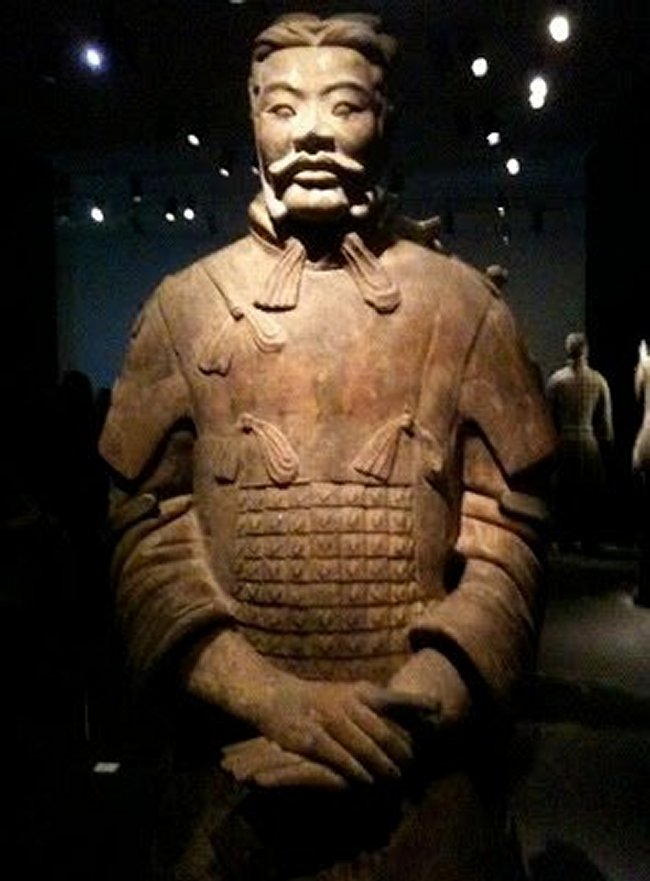Mysterious History Of Qin Shi Huang – First Emperor Of China
Ellen Lloyd - AncientPages.com - Emperor Qin Shi Huang's past is still surrounded by a number of unsolved mysteries and controversies. His birth and death remain a great puzzle until this day.
According to legend, a rich merchant named Lu Buwei befriended a prince of the Qin State during the latter years of the Eastern Zhou Dynasty (770-256 BCE).
The merchant's lovely wife Zhao Ji had just gotten pregnant, so he arranged for the prince to meet and fall in love with her. She became the prince's concubine, and then gave birth to Lu Buwei's child in 259 BCE.
The baby, born in Hanan, was named Ying Zheng. The prince believed the baby was his own.
Ying Zheng became king of the Qin state in 246 BCE, upon the death of his supposed father. He ruled as Qin Shi Huang, and unified China for the first time. The young king was only 13 years old when he took the throne.
First Emperor Of A Unified China
Qin Shi Huang (or Shi Huangdi) was the First Emperor of a unified China, who ruled from 246 BCE to 210 BCE. In his 35-year reign, he managed to create magnificent and enormous construction projects. He also caused both incredible cultural and intellectual growth and much destruction within China.
Whether he should be remembered more for his creations or his tyranny is a matter of dispute, but everyone agrees that Qin Shi Huang, the first emperor of the Qin Dynasty, was one of the most important rulers in Chinese history.
Was Qin Shi Huang Handsome Or Disfigured?
Qin Shi Huang true appearance remains a subject of debate. Was Qin Shi Huang a handsome or disfigured man? According to some sources he was tall and handsome while others hold that he was short and disfigured. The description of his features can be found in the Book of History.
But since the book was written in classical languages during the Western Han Dynasty (206 BC-24 AD), there are disagreements based on the difference of interpretation of modern people.
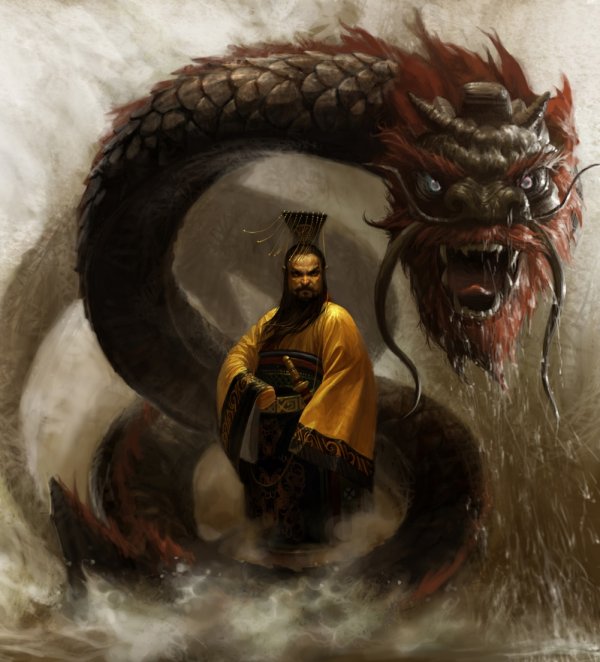
The Qin empire was founded at end of a war between a few powers that had lasted for more than two centuries.
One group thinks the emperor had big eyes, a high nose, a loud voice and a spirited quality in action.
Walking erect and confident, he was a real Apollo. While in the opinion of others, represented by Guo Moruo, a Chinese author, historian, and archaeologist, Qin Shi Huang had a saddle nose, protruding eyeballs and the howl of a jackal. He was pigeon-breasted and suffered from tracheitis and rickets.
Qin Shi Huang's Quest For Immortality
As he entered middle age, the First Emperor grew more and more afraid of death. He became obsessed with finding the elixir of life, which would allow him to live forever.
The court doctors and alchemists concocted a number of potions, many of them containing "quicksilver" (mercury), which probably had the ironic effect of hastening the emperor's death rather than preventing it.
Just in case the elixirs did not work, in 215 BCE the Emperor also ordered the construction of a gargantuan tomb for himself. Plans for the tomb included flowing rivers of mercury, cross-bow booby traps to thwart would-be plunderers, and replicas of the Emperor's earthly palaces.
Qin Shi Huang's Terracotta Army
To guard Qin Shi Huang in the afterworld, and perhaps allow him to conquer heaven as he had the earth, the emperor had a terracotta army of at least 8,000 clay soldiers placed in the tomb. The army also included terracotta horses, along with real chariots and weapons.
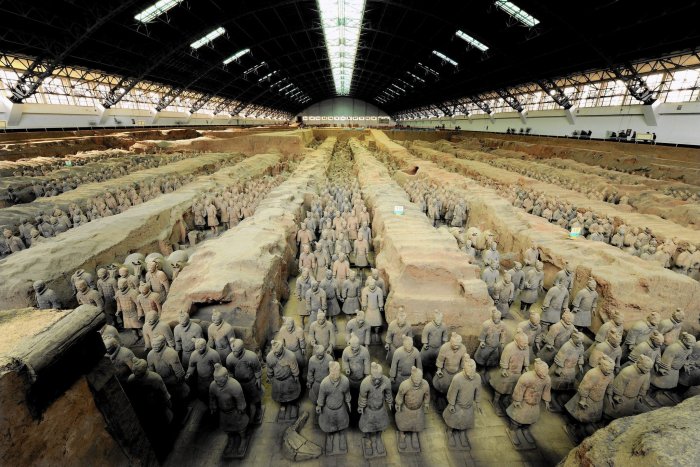
The "China's First Emperor and His Terracotta Warriors". Image credit: Chicago Tribune
The underground terracotta army found in Qin Shi Huang, the First Emperor’s burial complex is undoubtedly one of the most remarkable and mysterious discoveries from the ancient world.
When the burial complex was first discovered by farmers in 1974, archaeologists set to work on one of the most astonishing ancient sites on record. The excavation uncovered a sprawling citadel with thousands of warriors, each designed with a unique face and clothing (although the bodies and limbs were mass-produced from molds).
The Death Of Qin Shi Huang
A large meteor fell in Dongjun in 211 BCE - an ominous sign for the Emperor. To make matters worse, someone etched the words "The First Emperor will die and his land will be divided" onto the stone. Some saw this as a sign that the Emperor had lost the Mandate of Heaven.
Since nobody would fess up to this crime, the Emperor had everyone in the vicinity executed. The meteor itself was burned and then pounded into powder.
See also:
Controversy Of Cao Cao’s Tomb Continues – Did Archaeologists Unearth A Fake Tomb?
Controversial Story And Secret Knowledge Of Li Ching-Yuen Who Lived For 256 Years!
2,000 Year-Old Books Written By Bian Que The Divine Healer Unearthed
Nevertheless, the Emperor died less than a year later, while touring eastern China in 210 BCE. The cause of death most likely was mercury poisoning, due to his immortality treatments.
Were the remains of Qin Shi Huang preserved intact? Some experts have proposed that the remains of Qin Shi Huang are intact while others disagree on this issue.
Like his birth, the death of Qin Shi Huang is also a mystery. His sudden death gave people a lot of space to imagine. Some say he died of poisoning from the elixirs. Some believe that he died from overwork. According to other researchers, he was murdered. Who is correct? There is no final conclusion and much of Qin Shi Huang’s life and death still remains shrouded in mystery.
Written by Ellen Lloyd – AncientPages.com
Copyright © AncientPages.com This material may not be published, broadcast, rewritten or redistributed in whole or part without the express written permission of AncientPages.com
More From Ancient Pages
-
 Ancient DNA Reveals Surprising Stories About Migrations And Genetic Mixing Of Our Ancestors
Archaeology | Feb 22, 2018
Ancient DNA Reveals Surprising Stories About Migrations And Genetic Mixing Of Our Ancestors
Archaeology | Feb 22, 2018 -
 Ancient Tombs Of The Nobles In The Valley Of The Queens
Featured Stories | Oct 23, 2016
Ancient Tombs Of The Nobles In The Valley Of The Queens
Featured Stories | Oct 23, 2016 -
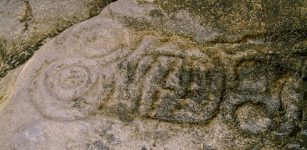 Prehistoric Temperatures Of North America’s Oldest Archaeological Sites Shed New Light On Ancient Human Migration
Archaeology | Apr 3, 2023
Prehistoric Temperatures Of North America’s Oldest Archaeological Sites Shed New Light On Ancient Human Migration
Archaeology | Apr 3, 2023 -
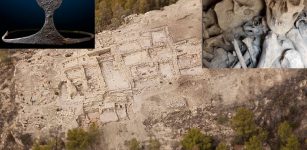 El Argar Civilization: Bronze Age Palace And Grave Goods Unearthed In Spain’s La Almoloya
Archaeology | Oct 15, 2014
El Argar Civilization: Bronze Age Palace And Grave Goods Unearthed In Spain’s La Almoloya
Archaeology | Oct 15, 2014 -
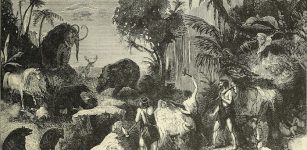 Ancient Human Feeding Behavior Studied By Scientists
Archaeology | Jan 18, 2022
Ancient Human Feeding Behavior Studied By Scientists
Archaeology | Jan 18, 2022 -
 Did Our Ancestors Know About Artificial Intelligence?
Ancient Technology | Sep 2, 2015
Did Our Ancestors Know About Artificial Intelligence?
Ancient Technology | Sep 2, 2015 -
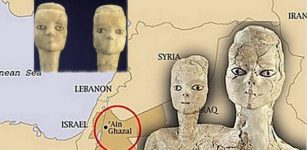 Stone Age Statues Were Taken To Britain For Restoration In 1990 – Never Returned Home To Jordan
News | Apr 6, 2021
Stone Age Statues Were Taken To Britain For Restoration In 1990 – Never Returned Home To Jordan
News | Apr 6, 2021 -
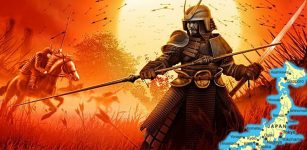 The Bushido Code: Centuries-Old Unwritten Code For Ideal Samurai Warrior
Featured Stories | Dec 26, 2016
The Bushido Code: Centuries-Old Unwritten Code For Ideal Samurai Warrior
Featured Stories | Dec 26, 2016 -
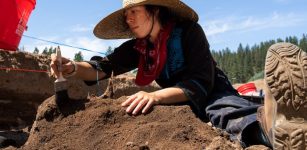 6,000-Year-Old Earth Ovens Discovered In Washington State
Archaeology | Jun 21, 2023
6,000-Year-Old Earth Ovens Discovered In Washington State
Archaeology | Jun 21, 2023 -
 Explorer Discovered A Lost Underground World Beneath Big Sur In North America – But Why Cannot Anyone Else Find It Now?
Featured Stories | Feb 12, 2019
Explorer Discovered A Lost Underground World Beneath Big Sur In North America – But Why Cannot Anyone Else Find It Now?
Featured Stories | Feb 12, 2019 -
 Unique Maya Center Of Copán With History Recorded In 2500 Hieroglyphics
Civilizations | Nov 7, 2018
Unique Maya Center Of Copán With History Recorded In 2500 Hieroglyphics
Civilizations | Nov 7, 2018 -
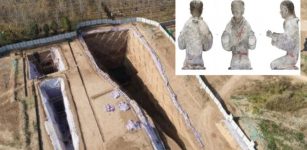 Thousands Magnificent Jade Artifacts Discovered In Han Dynasty Tombs – China’s Golden Age In New Light
Archaeology | Jul 23, 2020
Thousands Magnificent Jade Artifacts Discovered In Han Dynasty Tombs – China’s Golden Age In New Light
Archaeology | Jul 23, 2020 -
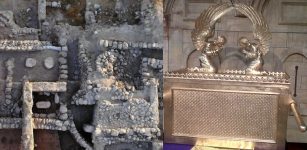 Mysterious Stone Table Found At Biblical Temple In Jerusalem – Evidence Of The Ark Of The Covenant?
Archaeology | Dec 20, 2019
Mysterious Stone Table Found At Biblical Temple In Jerusalem – Evidence Of The Ark Of The Covenant?
Archaeology | Dec 20, 2019 -
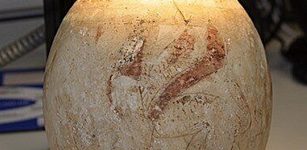 5,000-Year-Old Mystery: Decoration Of Eggs Predates Our Easter Tradition
Archaeology | Apr 9, 2020
5,000-Year-Old Mystery: Decoration Of Eggs Predates Our Easter Tradition
Archaeology | Apr 9, 2020 -
 Huangluo: Long-Hair Village Where Women Don’t Cut Their Hair – A 2,000-Year-Old Tradition Of The Yao People
Ancient Traditions And Customs | Jun 18, 2017
Huangluo: Long-Hair Village Where Women Don’t Cut Their Hair – A 2,000-Year-Old Tradition Of The Yao People
Ancient Traditions And Customs | Jun 18, 2017 -
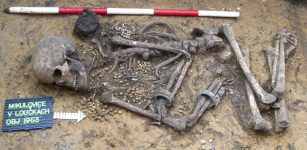 Central European Prehistory Was Highly Dynamic – New Study Shows
Archaeology | Aug 27, 2021
Central European Prehistory Was Highly Dynamic – New Study Shows
Archaeology | Aug 27, 2021 -
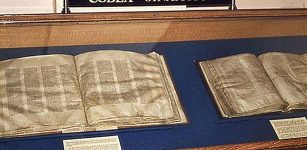 World’s oldest bible -The Codex Sinaiticus – to be displayed at the British Museum
News | Sep 1, 2015
World’s oldest bible -The Codex Sinaiticus – to be displayed at the British Museum
News | Sep 1, 2015 -
 Tomb of Patriarchs In Hebron Was Used And Visited By Pilgrims 2,700 Years Ago – New Study
Archaeology | Jul 10, 2020
Tomb of Patriarchs In Hebron Was Used And Visited By Pilgrims 2,700 Years Ago – New Study
Archaeology | Jul 10, 2020 -
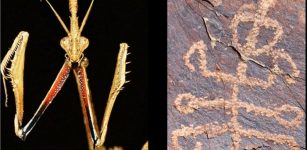 Ancient Mantis-Man Petroglyph Discovered In Teymareh, Iran
Archaeology | Mar 16, 2020
Ancient Mantis-Man Petroglyph Discovered In Teymareh, Iran
Archaeology | Mar 16, 2020 -
 Dura-Europos Roman Shield Created With Ancient Painting Techniques On Wood
Archaeology | Nov 9, 2015
Dura-Europos Roman Shield Created With Ancient Painting Techniques On Wood
Archaeology | Nov 9, 2015

